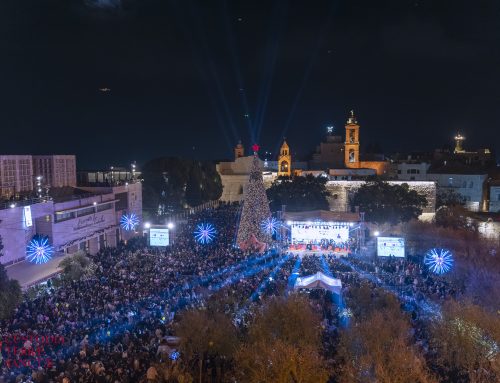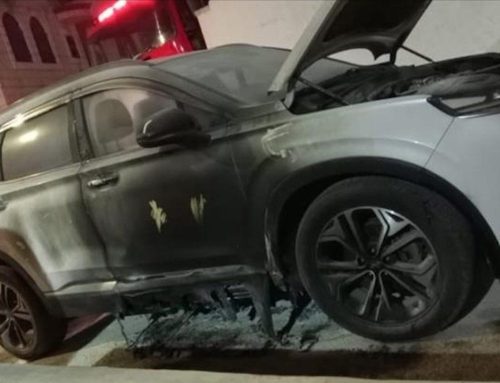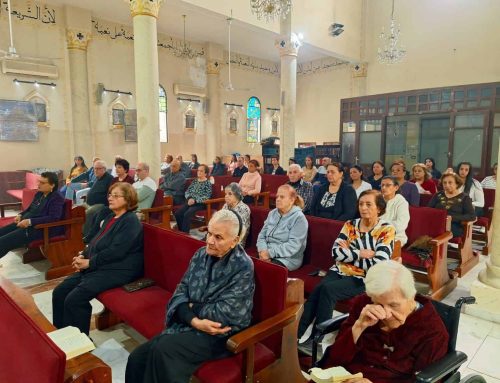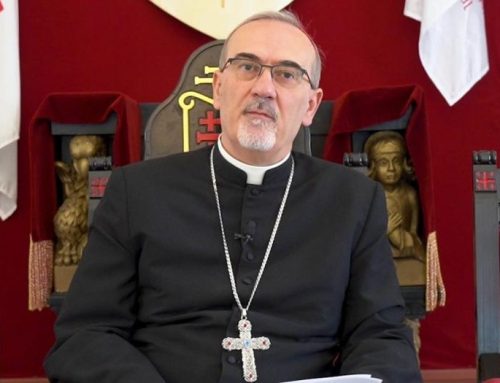Although the Christian presence in the Holy Land is shrinking to a level that could label them an “endangered species,” they possess the power to draw American Christians into one of the most debated conflicts in the world today, the Palestinian-Israeli conflict.
Although the Christian presence in the Holy Land is shrinking to a level
that could label them an “endangered species,” they possess the power to
draw American Christians into one of the most debated conflicts in the world today, the Palestinian-Israeli conflict. “The Christian presence in the Holy Land is a quiet voice that could wake up the louder voices,” Charles Sennott, former Middle East bureau chief of the Boston Globe, observed at a 4 April 2002 Center for Policy Analysis on Palestine (CPAP) luncheon briefing. According to Sennott, Holy Land Christians “complicate” the Middle East conflict because they draw American Christians to the modern Middle East.
Sennott argued that the conflict, with land at its core, has taken on religious overtones. He believes just as international law should be used to address the issue of land, religious leaders must step in and offer guidance within their areas of influence. Sennott stressed that rabbis, clerics, and priests must get involved. He warned Hamas and the extremist settlers should not be allowed to control events. To understand why Christians, who 100 hundred years ago represented more than 15 percent of the population, today number less than 2 percent of the inhabitants of the land where Christianity began, Sennott traveled from Nazareth and Bethlehem to Egypt, Lebanon, and Jerusalem. In the course of his journey, he found that the injustices faced by Christians 2,000 years ago still exist. Sennott’s book, The Body and The Blood, is an attempt to help American Christians understand that. To most American Christians, the fighting between he Israelis and Palestinians is a Jewish-Muslim fight. Sennott believes that hanged when American Christians saw smoke rising behind the cross of the Church of the Nativity. They were forced then, he argued, to think about their connection to that land.
“That is why,” argued Sennott, “the Christian presence in the Holy Land has the power to make American Christians re-think their connection to that part of the world.” “The Holy Family
The course of his book changed when he saw a traditionally dressed Palestinian woman with a baby in her arms waiting at an Israeli checkpoint to enter Bethlehem. “I immediately saw the Virgin Mary,” Sennott reflected. Realizing that Joseph and Mary left Nazareth because of occupation, Sennott wanted to invite Jewish Americans, Jews, and Israelis to understand that occupation, no matter who is doing it, “messes with your life.” Sennott wanted his book to be “complicated.” While tracing Jesus’ steps in Nazareth, Sennott wrote about Israeli Arabs and “Upper Nazareth,” an Israeli expansion project that is “choking the city [of Nazareth].” In Lebanon, he wrote about Christians as persecutors who took part in the massacre of Palestinian refugees in Sabra and Shatila.
In September 2000, his book took another turn. While working on what was to be the last chapter of the book, Sennott found himself trapped between Israeli snipers and rock-throwing Palestinians at the site where tradition says Jesus walked to his crucifixion. It was the start of a bloody cycle of violence between Israelis and Palestinians that still rages today. He then knew that his book was far from done. American Christians have been cut off from the conflict Sennott said. “Through this book, I want Americans to understand the Middle East.”
The above text is based on remarks delivered on 4 April 2002 by Charles Sennott. The speaker’s views do not necessarily reflect those of the Center for Policy Analysis on Palestine or The Jerusalem fund. This “For the Record” may be used without permission but with proper attribution to CPAP.
To contact the speaker write to sennott@globe.com.





